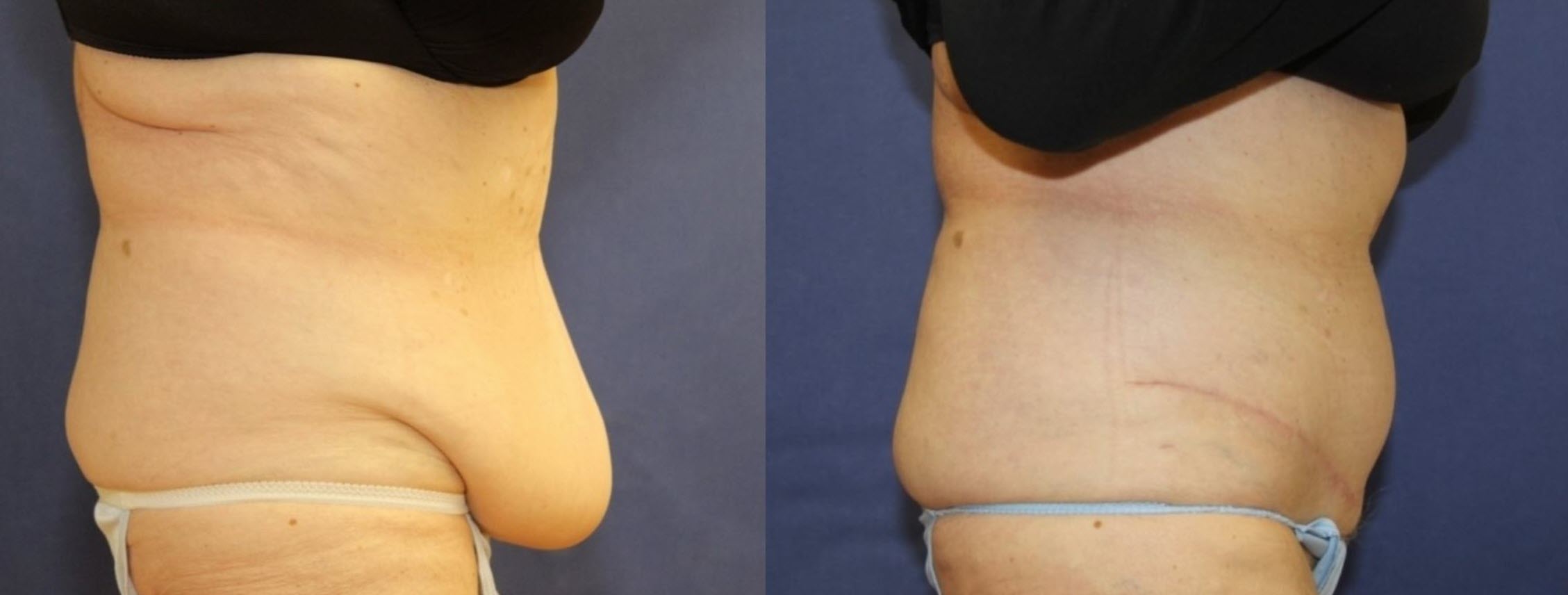Home>Finance>How Much Is Skin Removal Surgery With Insurance?


Finance
How Much Is Skin Removal Surgery With Insurance?
Published: November 14, 2023
Find out how much skin removal surgery costs with insurance coverage. Get information on financing options for this procedure and start your journey to a transformed appearance.
(Many of the links in this article redirect to a specific reviewed product. Your purchase of these products through affiliate links helps to generate commission for LiveWell, at no extra cost. Learn more)
Table of Contents
Introduction
Skin removal surgery, also known as body contouring or body sculpting, is a surgical procedure aimed at removing excess skin and fat from various areas of the body. It is often sought by individuals who have lost a significant amount of weight or undergone bariatric surgery. While skin removal surgery can greatly improve one’s appearance and self-confidence, it is a major surgical procedure that comes with a significant cost.
Many people wonder if skin removal surgery is covered by insurance. The answer to this question depends on several factors, including the insurance provider, the individual’s specific policy, and the medical necessity of the procedure. In this article, we will explore the topic of insurance coverage for skin removal surgery and provide insights into the cost of the procedure with insurance.
It is important to note that skin removal surgery is considered a cosmetic procedure by most insurance providers. Cosmetic procedures are typically not covered by insurance as they are viewed as elective and non-medically necessary. However, in some cases, insurance may provide coverage for skin removal surgery if it is deemed medically necessary.
The determination of medical necessity for skin removal surgery varies among insurance providers. Generally, insurance policies cover skin removal surgery when it is necessary to alleviate medical complications or improve quality of life. Medical complications may include chronic rashes, infections, or discomfort caused by excess skin folds. Additionally, individuals who have documented mental health issues related to the excess skin may also be considered for coverage.
Understanding Skin Removal Surgery
Skin removal surgery, also known as body contouring or body sculpting, is a surgical procedure that aims to remove excess skin and fat from different areas of the body. It is a popular choice for individuals who have lost a significant amount of weight, either through diet and exercise or bariatric surgery, and are left with loose, sagging skin.
This surgical procedure targets areas such as the abdomen, thighs, arms, breasts, and buttocks, where excess skin is most commonly found. The surgeon will carefully remove the excess skin and fat, tighten the remaining skin, and reshape the body contours to create a more defined and proportionate appearance.
There are various techniques used in skin removal surgery, depending on the specific areas being treated and the amount of excess skin present. These techniques may include abdominoplasty (tummy tuck), brachioplasty (arm lift), thigh lift, breast lift, and lower body lift.
While skin removal surgery can greatly enhance a person’s physical appearance and improve self-esteem, it is important to understand that it is a major surgical procedure. The surgery is typically performed under general anesthesia, and the recovery period can vary depending on the extent of the procedure and individual healing factors.
Prior to undergoing skin removal surgery, patients are required to have a consultation with a board-certified plastic surgeon. During this consultation, the surgeon will assess the patient’s overall health, discuss their goals and expectations, and determine whether they are a suitable candidate for the procedure.
It is crucial for individuals considering skin removal surgery to have realistic expectations and understand the potential risks and complications associated with the procedure. Some common risks include infection, bleeding, scarring, and changes in sensation. By thoroughly discussing these aspects with the surgeon, patients can make informed decisions about moving forward with the surgery.
Coverage for Skin Removal Surgery
When it comes to insurance coverage for skin removal surgery, it is important to note that most insurance providers consider it a cosmetic procedure and therefore do not provide coverage. Cosmetic procedures are typically seen as elective and are not deemed medically necessary.
That being said, there are instances where insurance may cover skin removal surgery. Insurance providers may consider coverage if the procedure is deemed medically necessary to alleviate physical discomfort or improve the overall quality of life for the patient. The determination of medical necessity varies among insurance companies and is often based on specific criteria.
Typically, insurance coverage for skin removal surgery depends on several factors:
- Documented medical complications: Insurance providers may require documentation of medical complications caused by excess skin, such as chronic rashes, infections, or physical discomfort. These complications must be well-documented and demonstrated to significantly impact the patient’s physical well-being.
- Mental health considerations: In some cases, insurance may consider coverage for skin removal surgery if there are documented mental health concerns related to the excess skin. This may include body dysmorphia, depression, or anxiety caused by the appearance of loose skin.
- Weight stability: Insurance providers may also require individuals to have maintained a stable weight for a certain period of time before considering coverage. This is to ensure that the excess skin is not a result of recent weight fluctuations.
- Prior authorization and documentation: Insurance companies often require prior authorization and thorough documentation from healthcare providers to support the medical necessity of skin removal surgery. This may include photographs, medical records, and a detailed explanation of how the excess skin is impacting the patient’s health and well-being.
It is important to remember that each insurance policy is different, and coverage for skin removal surgery will vary. It is recommended to thoroughly review your specific insurance policy and consult with your insurance provider to understand the coverage options available to you.
If your insurance does not cover skin removal surgery or only provides partial coverage, some options may still be available. Some patients choose to explore financing options, such as personal loans or medical financing companies, to manage the costs associated with the procedure.
Ultimately, it is essential to thoroughly research and understand your insurance coverage before pursuing skin removal surgery. Consultation with a board-certified plastic surgeon who has experience navigating insurance coverage for such procedures is also highly advisable.
Factors Affecting Insurance Coverage
Several factors can influence whether or not your insurance provider will cover skin removal surgery. Understanding these factors can help you navigate the insurance process and determine your potential eligibility for coverage. Here are some key factors that can affect insurance coverage for skin removal surgery:
- Insurance Provider: Different insurance providers have varying policies regarding coverage for skin removal surgery. Some may have more lenient criteria for coverage, while others may have stricter guidelines. It is important to review your policy and contact your insurance provider directly to understand their specific requirements and limitations.
- Medical Necessity: Insurance coverage for skin removal surgery often hinges on whether the procedure is deemed medically necessary. This means that the excess skin must be causing physical health issues, such as chronic rashes, infections, or discomfort. Additionally, some insurance providers may consider mental health factors, such as body dysmorphia or significant psychological distress, as important criteria for coverage.
- Documentation and Prior Authorization: Insurance companies typically require thorough documentation from healthcare providers to support the medical necessity of the procedure. This may include photographs, medical records, and detailed explanations of the impact of excess skin on your physical and mental well-being. Prior authorization may also be necessary before proceeding with the surgery.
- Weight Stability: Many insurance providers require individuals to have reached and maintained a stable weight for a period of time before considering coverage for skin removal surgery. This is to ensure that the excess skin is not a result of recent weight fluctuations or weight loss that may be regained.
- Insurance Policy Exclusions: It is important to carefully review your insurance policy to understand any exclusions or limitations that may apply. Some policies may specifically exclude coverage for cosmetic procedures or have specific requirements and criteria for coverage of skin removal surgery.
It is crucial to communicate openly with your healthcare provider and insurance company throughout the process. They can guide you on what is required for coverage and provide the necessary documentation and support for your insurance claim. Keep in mind that the decision regarding coverage ultimately lies with the insurance provider, and eligibility may vary.
If your insurance does not provide coverage for skin removal surgery or only offers partial coverage, alternative options may be available. Some patients explore financing options, such as personal loans or medical financing companies, to help manage the cost of the procedure.
Remember to consult with a board-certified plastic surgeon who has experience with insurance coverage for skin removal surgery. They can provide valuable guidance and ensure that you have a clear understanding of the insurance process.
Cost of Skin Removal Surgery with Insurance
The cost of skin removal surgery can vary widely depending on several factors, including the specific procedure(s) involved, the extent of the surgery, the surgeon’s experience, and the geographic location. It is important to note that insurance coverage for skin removal surgery is not guaranteed, as it is considered a cosmetic procedure in most cases. However, if deemed medically necessary, insurance may provide some coverage.
When insurance does cover skin removal surgery, it typically includes coverage for the surgeon’s fees, hospital or surgical facility charges, anesthesia fees, and post-operative care. However, it is important to check with your insurance provider to understand the specific coverage details and any out-of-pocket expenses you may still be responsible for.
Even with insurance coverage, patients should anticipate additional costs that may not be covered by insurance. These may include deductibles, co-pays, and any expenses related to pre-operative assessments, medications, and post-operative garments or supplies. It is important to thoroughly review your insurance policy and consult with your insurance provider to get a clear understanding of these potential out-of-pocket expenses.
If skin removal surgery is not covered by insurance or only partially covered, patients will be responsible for the full cost of the procedure. The cost can range anywhere from a few thousand dollars to tens of thousands of dollars, depending on the complexity of the surgery and the surgeon’s fees. It is advisable to consult with a board-certified plastic surgeon experienced in skin removal surgery to get a comprehensive understanding of the anticipated cost.
It is worth noting that some surgeons offer financing options to help patients manage the cost of skin removal surgery. Financing options, such as payment plans or medical financing companies, allow patients to pay for the procedure over time, often with flexible terms and interest rates. This can make the procedure more affordable and accessible to individuals seeking skin removal surgery but may be limited to those with good credit.
Prior to proceeding with skin removal surgery, it is important to have a thorough discussion with your surgeon about the anticipated costs and any potential financial implications. Understanding the financial aspect of the surgery will help you plan and make informed decisions about pursuing the procedure.
Out-of-pocket Expenses for Skin Removal Surgery
When considering skin removal surgery, it is important to understand that there may be out-of-pocket expenses involved, even if you have insurance coverage. These expenses can vary based on several factors, including your insurance policy, the specific procedure(s) performed, and any additional services or supplies required during your recovery period.
Here are some common out-of-pocket expenses to consider:
- Deductibles and Co-pays: Depending on your insurance policy, you may have a deductible that needs to be met before your insurance coverage kicks in. Additionally, you may be responsible for co-pays, which are fixed amounts or percentages of the total cost that you need to pay out-of-pocket.
- Pre-operative Assessments: Prior to your skin removal surgery, your surgeon may require pre-operative assessments such as blood work, EKG, or imaging studies. These assessments are typically not covered by insurance and may need to be paid for separately.
- Medications: After your surgery, you may be prescribed pain medications, antibiotics, or other medications to support your recovery. The cost of these medications may not be covered by insurance and could be an out-of-pocket expense for you.
- Post-operative Garments and Supplies: Many patients require special garments or supplies to aid in their recovery after skin removal surgery. These items, such as compression garments or dressings, are typically not covered by insurance and will need to be purchased separately.
- Follow-up Care: Your surgeon will schedule follow-up appointments to monitor your healing progress. While these appointments are crucial for your recovery, they may not be fully covered by insurance. You may be responsible for co-pays or other fees associated with these visits.
- Additional Procedures: In some cases, patients may opt for additional procedures, such as liposuction or breast augmentation, in conjunction with their skin removal surgery. These additional procedures will have separate costs that may not be covered by insurance.
It is important to thoroughly review your insurance policy and consult with your insurance provider to understand the extent of your coverage and potential out-of-pocket expenses. By having a clear understanding of these expenses, you can plan your budget accordingly and avoid any unexpected financial burdens.
Additionally, it is worth exploring financing options, such as personal loans or medical financing companies, to help manage the out-of-pocket expenses associated with skin removal surgery. Many surgeons offer financing plans that allow patients to make monthly payments over time, making the procedure more affordable and accessible.
Before undergoing skin removal surgery, have an open and honest discussion with your surgeon about the anticipated out-of-pocket expenses. They can provide guidance and help you navigate the financial aspects of the procedure, ensuring that you are well-prepared for the investment involved in achieving your desired results.
Tips for Navigating Insurance Coverage
Navigating insurance coverage for skin removal surgery can be a complex and challenging process. However, with careful preparation and understanding, you can increase your chances of obtaining insurance coverage for the procedure. Here are some helpful tips to navigate insurance coverage for skin removal surgery:
- Consult with your insurance provider: Contact your insurance provider directly to understand the specific coverage details and requirements for skin removal surgery. Ask about any necessary documentation, prior authorization, and the criteria for medical necessity.
- Review your insurance policy: Thoroughly review your insurance policy, paying close attention to any exclusions or limitations related to cosmetic procedures. Understanding the coverage limitations will help you manage your expectations and plan accordingly.
- Document medical complications: Keep detailed records of any medical complications resulting from excess skin, such as chronic rashes, infections, or physical discomfort. These documented complications will strengthen your case for medical necessity and increase your chances of insurance coverage.
- Seek professional opinions: Consult with board-certified plastic surgeons experienced in skin removal surgery. They can provide expert opinions and documentation supporting the medical necessity of the procedure. This documentation will strengthen your case when submitting it to your insurance provider.
- Obtain prior authorization: Before undergoing the procedure, make sure you have obtained prior authorization from your insurance provider. This ensures that the procedure is preapproved and can help prevent any unexpected denials or complications regarding coverage.
- Appeal if necessary: If your insurance initially denies coverage for skin removal surgery, don’t give up. You have the right to appeal the decision. Work closely with your healthcare provider and insurance company to gather additional documentation and evidence to support your case for coverage.
- Consider alternative financing options: If your insurance does not cover skin removal surgery or only provides partial coverage, explore alternative financing options. Many surgeons offer financing plans, and there are medical financing companies that specialize in assisting patients with covering the costs of elective procedures.
- Stay organized: Keep a record of all communications, documents, and receipts related to your insurance coverage for skin removal surgery. This will help you stay organized and provide necessary information if any issues or questions arise during the process.
Remember, navigating insurance coverage for skin removal surgery requires patience, persistence, and thorough preparation. By being proactive, documenting medical necessity, and seeking professional guidance, you can increase your chances of obtaining insurance coverage for this life-changing procedure.
Conclusion
Skin removal surgery can be a transformative procedure for individuals who have experienced significant weight loss or undergone bariatric surgery. While insurance coverage for skin removal surgery may be challenging to obtain, it is not impossible. Understanding the factors that affect insurance coverage, the potential out-of-pocket expenses, and tips for navigating the process can help you in your pursuit of insurance coverage for this procedure.
Remember, insurance coverage for skin removal surgery is typically based on medical necessity. Demonstrating medical complications, such as chronic rashes or infections caused by excess skin, and addressing mental health concerns related to body image can increase your chances of getting coverage. Additionally, thorough documentation, prior authorization, and appeals if necessary are important steps in the process.
Even if insurance does not provide coverage or only offers partial coverage, there are alternative financing options available to help manage the cost of skin removal surgery. Many plastic surgeons offer financing plans, and medical financing companies specialize in helping patients finance elective procedures.
Ultimately, it is important to consult with a board-certified plastic surgeon experienced in skin removal surgery and communicate openly with your insurance provider to understand the specific requirements and limitations of your policy. By thoroughly researching and preparing for the process, you can make informed decisions, manage your expectations, and take steps towards achieving the body contouring results you desire.
While the road to insurance coverage for skin removal surgery may be challenging, it is important to remember that the ultimate goal is to enhance your physical well-being and improve your quality of life. With careful planning and perseverance, you can take the necessary steps towards achieving your desired results and enjoying the benefits of skin removal surgery.














